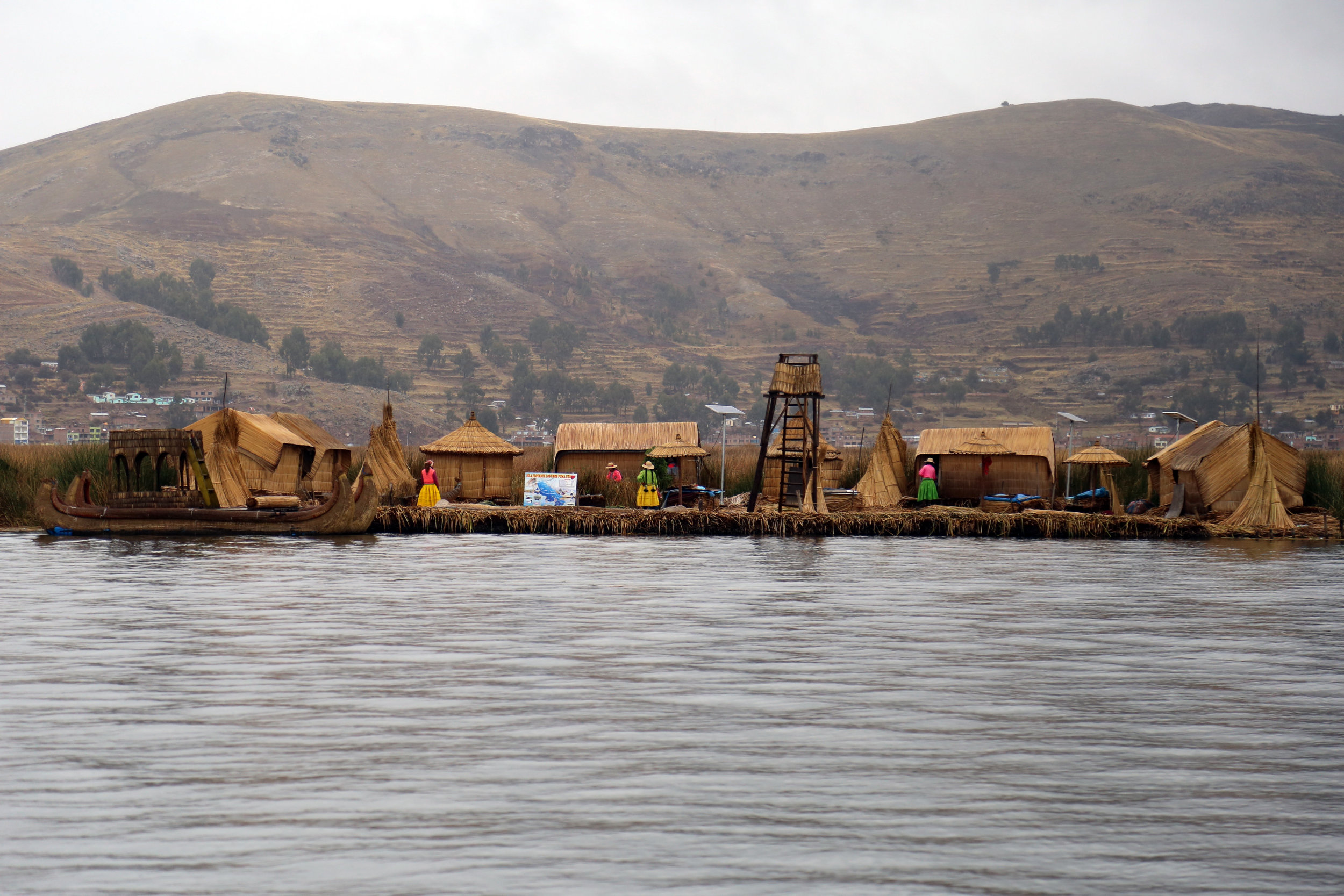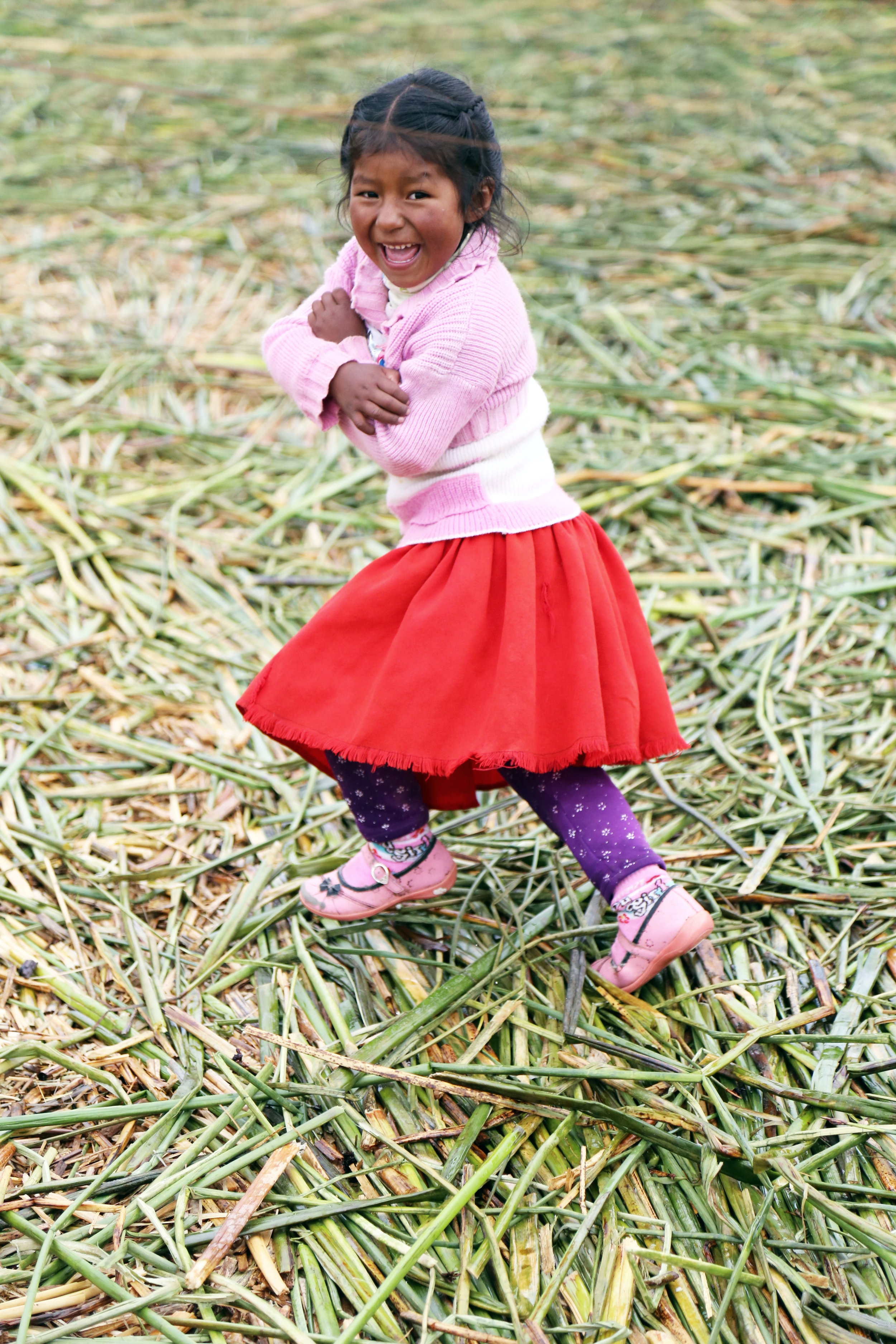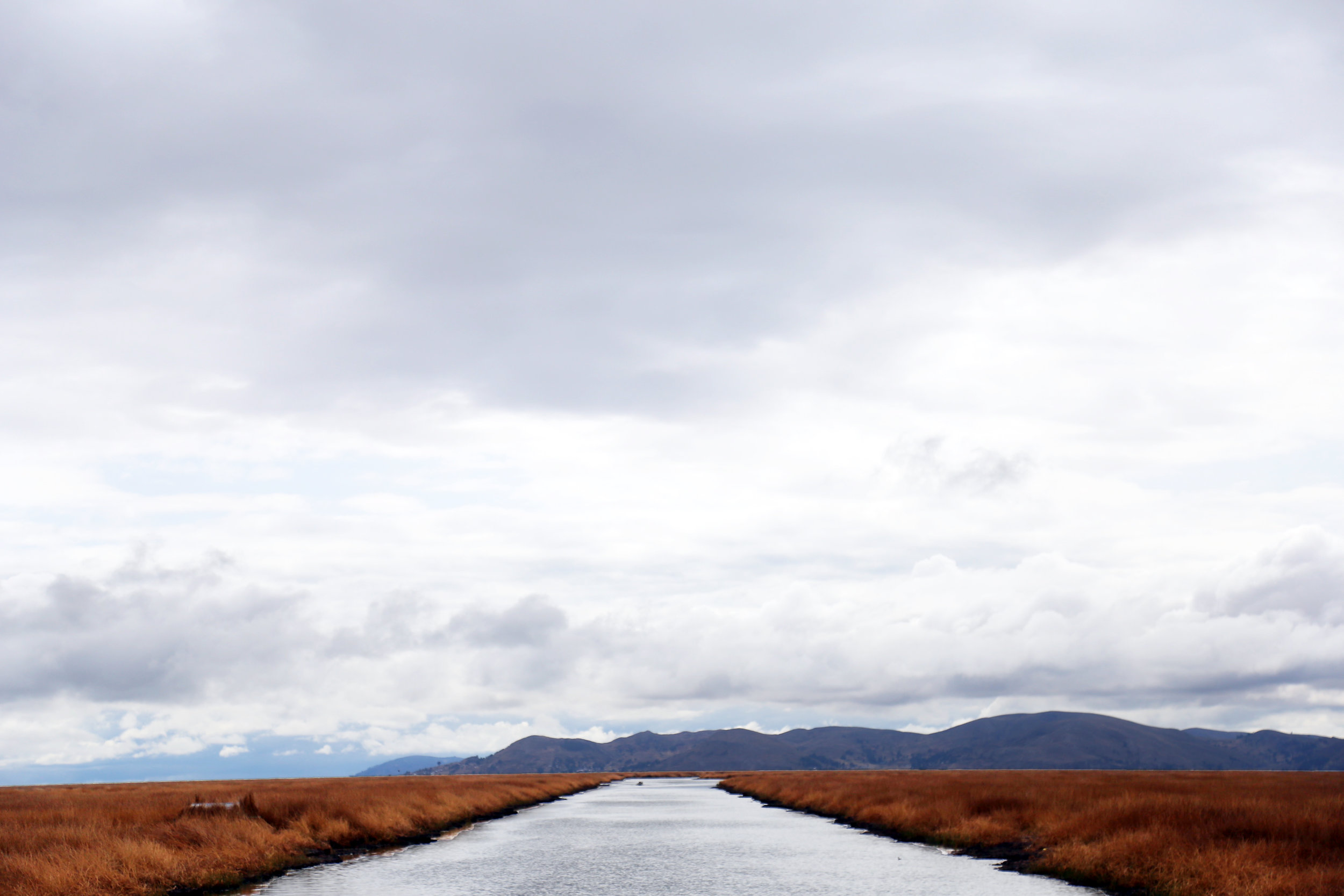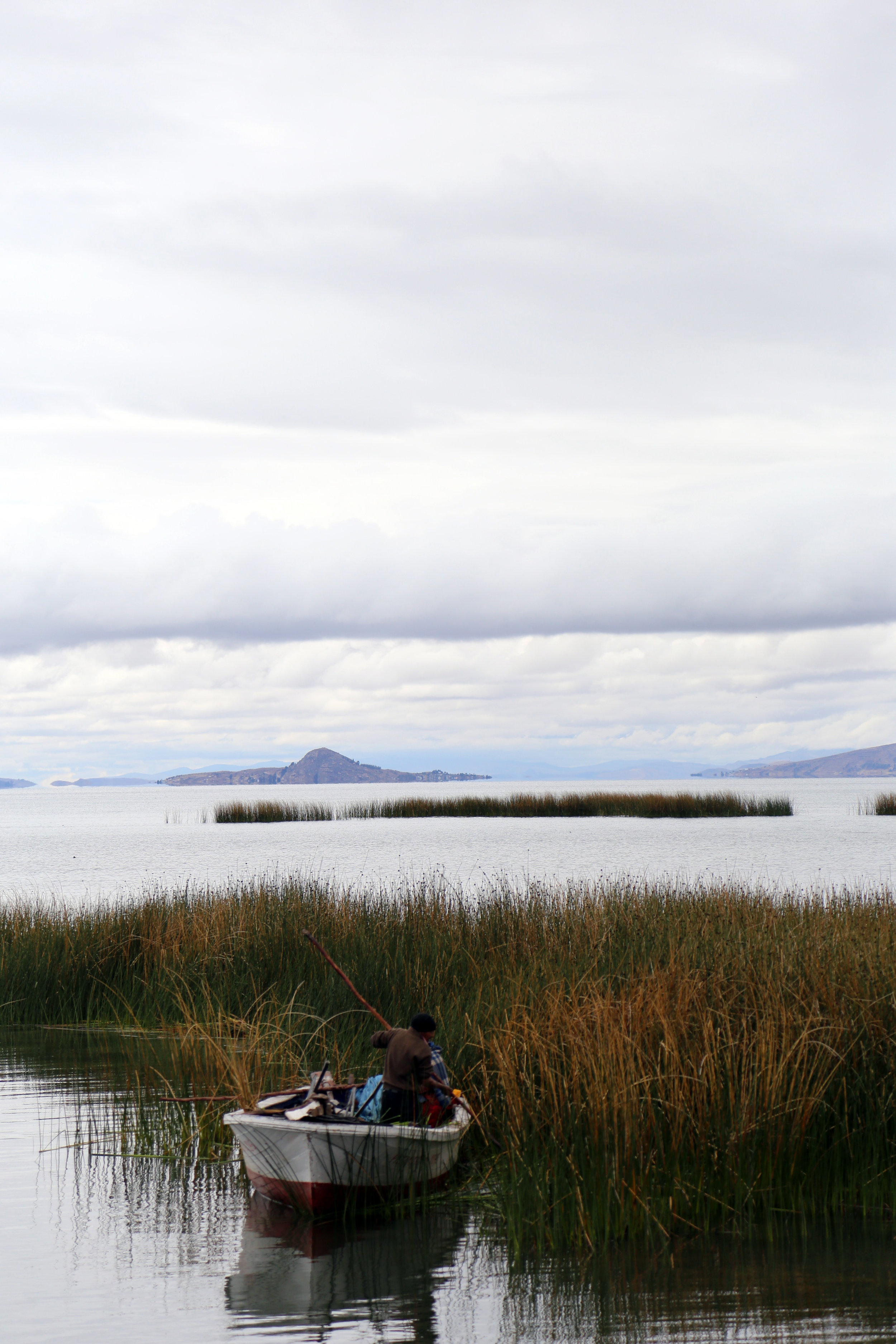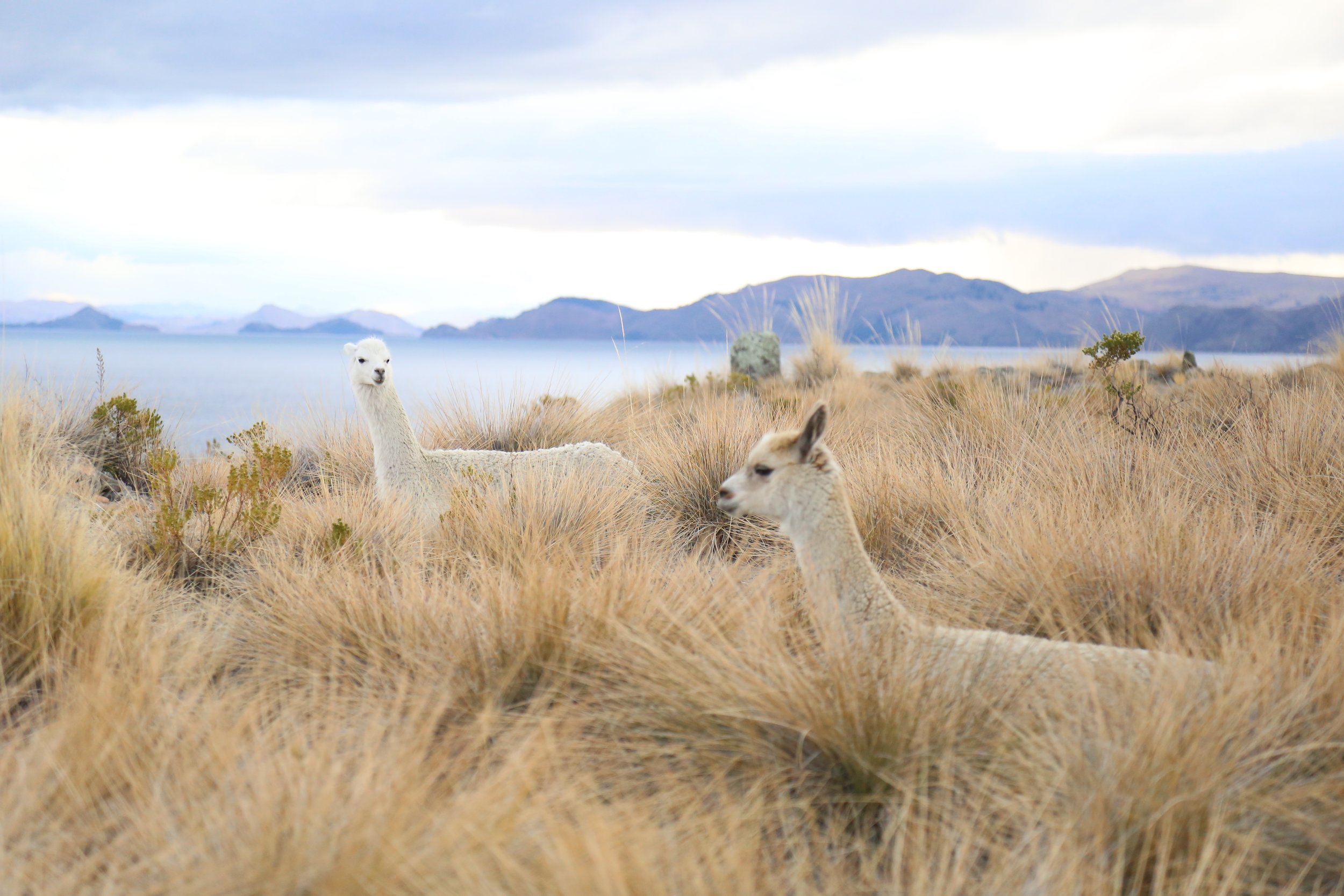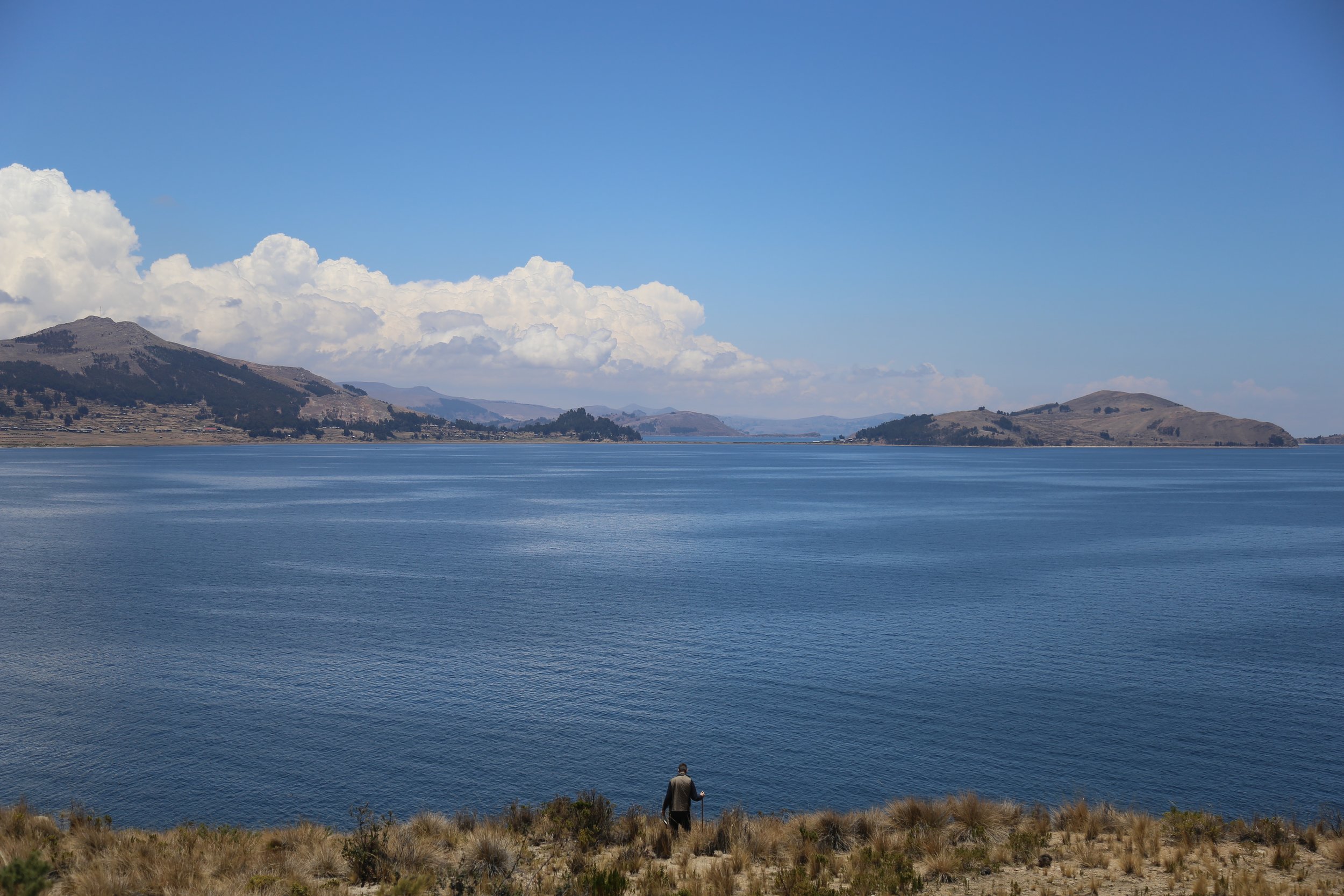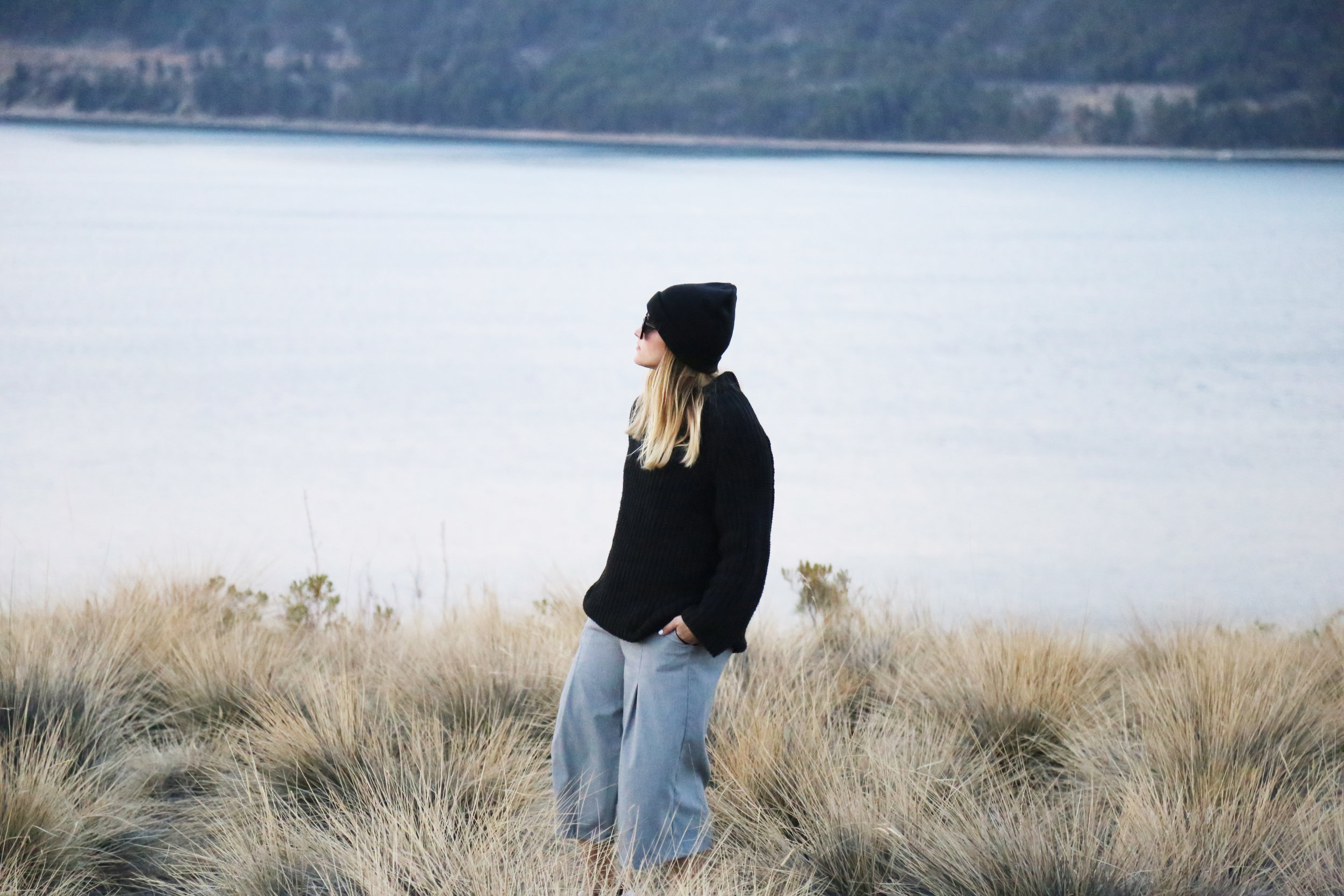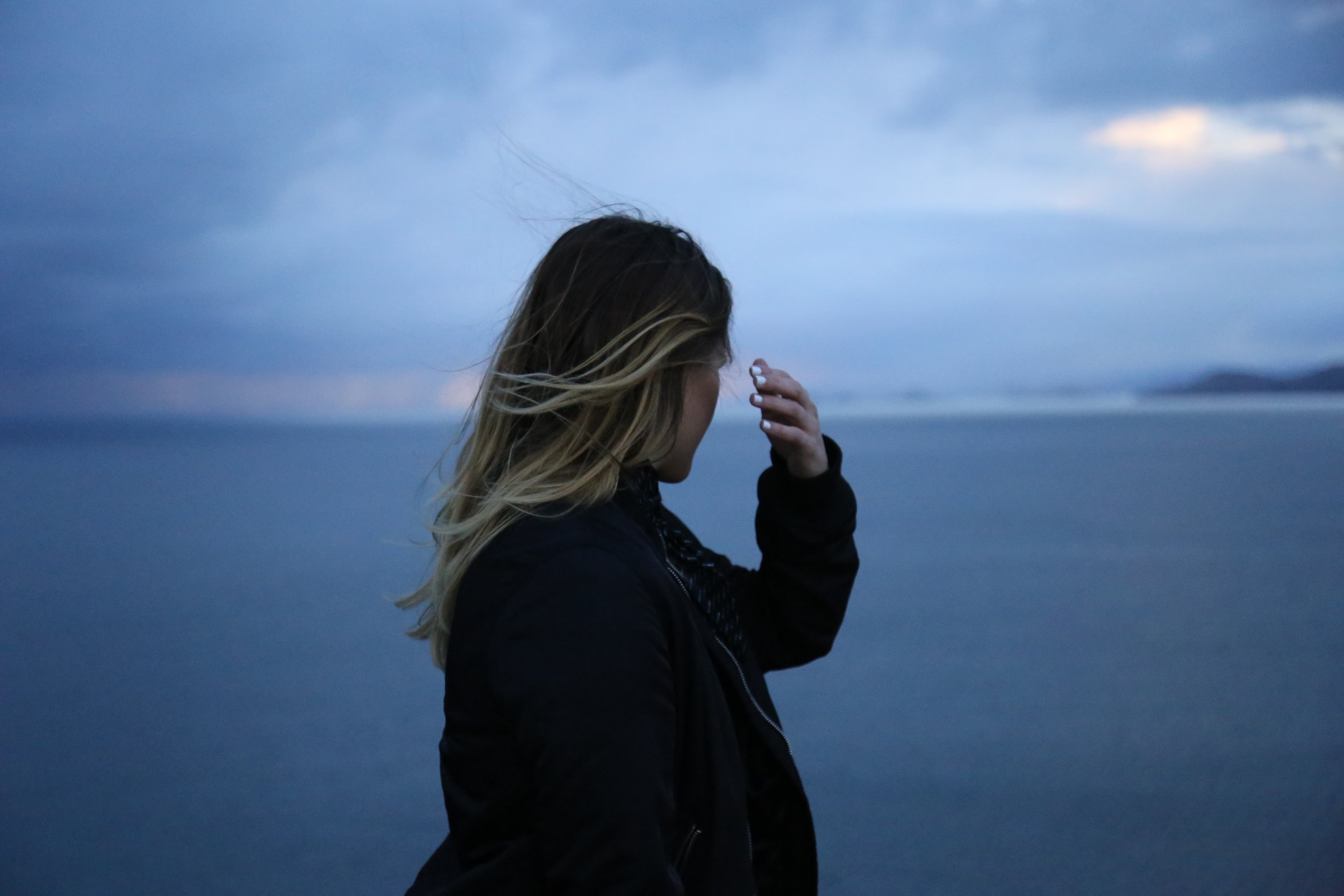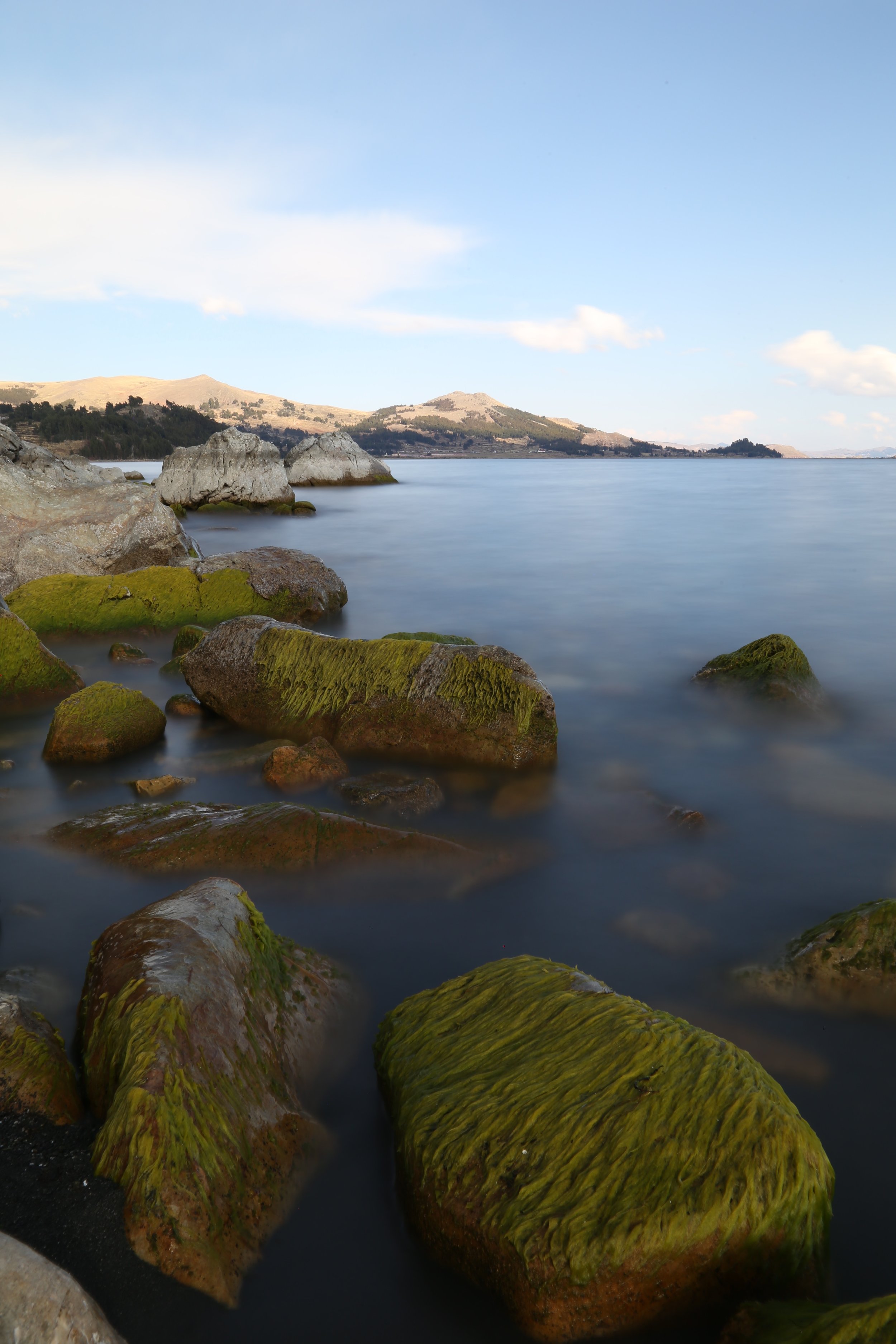Lake Titicaca, Peru
Our trip to Lake Titicaca, the highest navigable lake in the world, began with a 1 hour and 45 minutes flight from Lima to Juliaca. Once in Juliaca, we took a 1 hour bus ride to Puno where we spent the night. The next day we woke up early to catch our private boat to Isla Suasi. Before arriving to our private island oasis, we stopped at two historic locations, Uros Island and Tequile.
The Uros community first began with reed boats which then developed into what we see today, the floating reed islands. Currently, there are 42 floating island all of which are anchored. We were able to visit three families that "live" on one island. I say "live" because the majority of the Uros families do not actually live on the island anymore, they come everyday to show tourists around and sell their crafts. Since the reeds rot due to moisture, every week the family's must place a new layer of reeds on the surface. Walking on the island is quite difficult, I would compare it to walking on top of a mattress. The native language of the Uros's people is Quecha.
They call this the "Mercedes" of reed boats.
After our short time in Uros, we boarded the boat to set off to Tequile. The views were amazing and being exhausted from our travels and the high altitude, it was a perfect time for a nap!
Our second stop was the Island of Taquile. This island is known for their textiles and their native language is Quechua. In this island community, the men knit while the women weave. We visited several families that showed us how they weave, knit, spin, and clean wool. In 2006, Taquile was honored with the title "Masterpieces of the Oral and Intangible Heritage Humanity" by UNESCO. The traditional garb of Taquilenos is interesting in that it tells the marital status of each person. For example, married males wear a red hat and carry a coca leaf pouch whereas single males wear a white hat and carry no such pouch. It is important to note when visiting Uros and Taquile, they will expect you to buy their textiles since this is their main source of income.
A married man eating coca leaves (yes, the kind that makes cocaine). In Peru coca leaves are a big part of the culture. They are suppose to help with altitude sickness and provide energy.
After Taquile we headed to Isla Suasi for the remainder of our stay. All together the boat ride was three hours from Puno to Isla Suasi. The privately owned island is home to both alpacas and vicunas. The best part about the stay was the 360 degree view of Lake Titicaca.
Before arriving to Lake Titicaca make sure you are acclimated, especially if you have a history of altitude sickness. Our last night on Lake Titicaca was horrible. Tato started to feel sick; he had a fever, felt weak, and was non-stop coughing all throughout the night. The next morning around 5:30am we went to get oxygen from the lobby but that didn't make him feel better. We left for the airport which involved a boat, a 2 hour bus ride, a flight back to Lima, and then a hospital visit. Apparently, Tato ending up having High Altitude Pulmonary Edema (HAPE) which can be life threatening if you do not descend to a lower altitude quick enough. HAPE is a build up of fluids in the lungs. Thankfully we arrived back in Lima before anything worse happened. To say it was a memorable trip would be an understatement!

